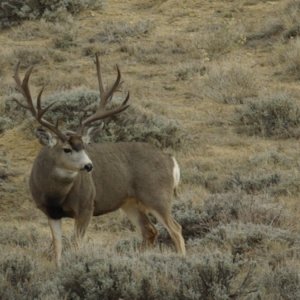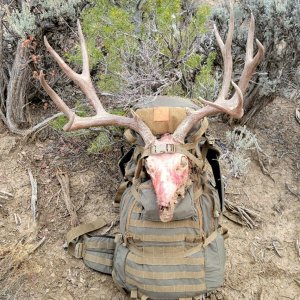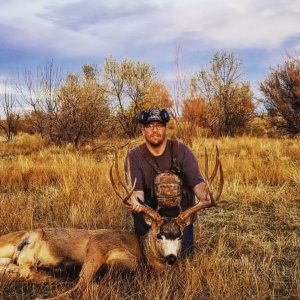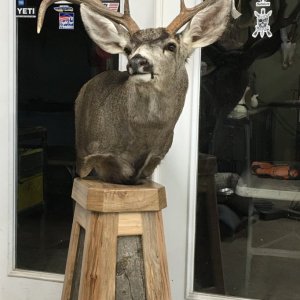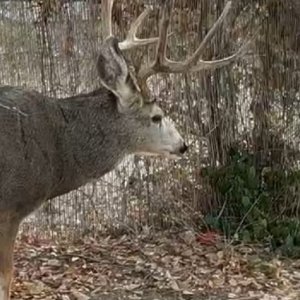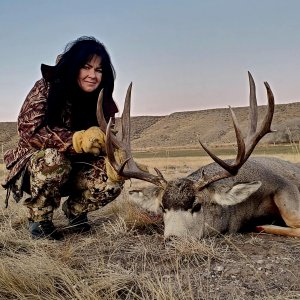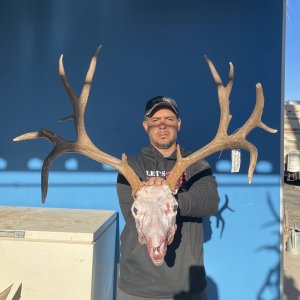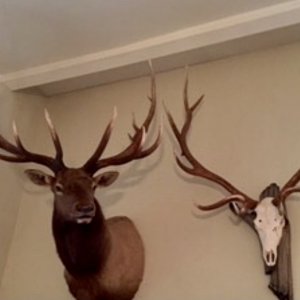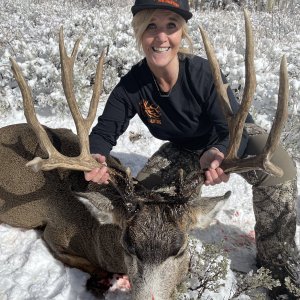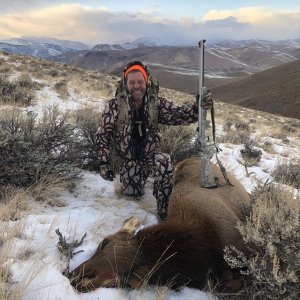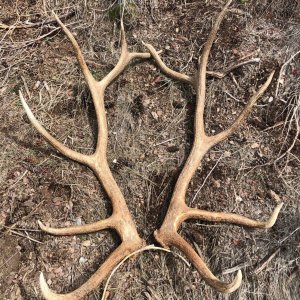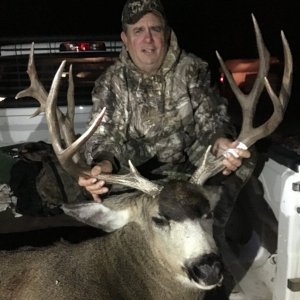This new regulation for the High Uintas Wilderness was enforced in 2006. Do you agree with the reg?
Should this be standard for all wilderness areas?
Why or why not?
What wildlife are at risk? How are they at risk?
What is the reason for including lakes above timber line?
What is the reason for including lakes that have no trails to them and are seldom visited?
What is the reason for including more lakes on the South Slope than the North Slope?
Campfire Restrictions
High Uintas Wilderness
Ashley National Forest
Wasatch-Cache National Forest
What are the restrictions?
Beginning September 2, 2005, campfires and wood stoves will be prohibited within ? mile of the following locations:
SOUTH SLOPE NORTH SLOPE
Lakes in Naturalist Basin Lakes in Brown Duck Basin McPheters/Ryder Lakes
Lakes/Spring in Pigeon Milk Area Lakes in Swasey Hole Amethyst/Emerald Lakes
Lakes in Grandaddy Basin Lakes in Garfield Basin Deadhorse Lake
Lakes in Four Lakes Basin Lakes in Atwood Basin Lower Red Castle Lake
Lakes in Squaw Basin Lakes in Chain Lakes Basin Dollar Lake
Lakes in Upper Rock Creek Lakes in Upper Uinta Canyon Henrys Fork Lake
This will affect less than 10% of the High Uintas Wilderness. All other areas will remain open to campfires, though all visitors are encouraged to practice ?Leave No Trace? by minimizing campfire impacts or, better yet, choosing to go without one. The Wasatch-Cache National Forest has had campfire restrictions in place for many years in the High Uintas Wilderness. This is an extension of those restrictions.
Why is this necessary?
High elevation ecosystems produce dead and down woody
debris (firewood) very slowly. Many years of heavy campfire
use, combined with slow rates of natural recovery, have
depleted firewood supplies in popular camping areas. But,
firewood is much more than just fuel for a campfire, it is a vital part of the wilderness resource.
Firewood is important for:
? Habitat for small mammals, birds, and insects
? Soil productivity (nutrient cycling)
? Recruitment of trees and native ground vegetation
? Aesthetic quality and natural wilderness character
Firewood collection activities also damage soil and vegetation as new trails are created and campsites expand, and standing trees (live and dead) are damaged when firewood becomes scarce and careless visitors strip or fall them to fuel their campfires. Together, these impacts can affect long-term ecological integrity and the quality of the wilderness experience. There are further impacts from campfires themselves.
In the summers of 2003 and 2004, wilderness rangers
contacted thousands of visitors to educate them on the effects
of firewood depletion and encourage them to ?Leave No Trace?
by minimizing campfire impacts or, better yet, choosing to go
without one. Though some visitors responded to this, most did
not. Campfire restrictions are widely used as an effective way
of addressing firewood depletion.
What will this accomplish?
Over time, campfire restrictions will help
rejuvenate nutrient-poor soils, promote the
recovery of trees and native ground vegetation,
improve habitat for certain plants and wildlife,
and enhance aesthetic quality. Together, these
benefits will help restore natural conditions that
may have been compromised and enhance the
wilderness experience.
HIGH UINTAS WILDERNESS
Campfire Restricted Sites
West Half
Grandaddy Basin Four Lakes Basin Brown Duck Basin Upper Rock Creek Middle Basin
Margo Lake Dean Lake Milk Lake Helen Lake McPheter?s Lake
Pinto Lake Jean Lake Tworoose Lake Lightning Lake Ryder Lake
Governor Dern Lake Dale Lake Lily Pad Lake Gladys Lake
Rainbow Lake Daynes Lake Kidney Lake Margie Lake Amethyst Basin
Range Lake Amy Lake Island Lake Rosalie Lake Emerald Lake
Jeff Lake Allen Lake Brown Duck Lake Uintah Lake Amethyst Lake
Pine Island Lake Bedground Lake Little Dog Lake Brinkley Lake
Lily Pad Lake Big Dog Lake Black Lake W Fork Black's Fork
Palisade Lake Naturalist Basin Aspen Lake Ouray Lake Deadhorse Lake
Lost Lake Morat Lakes Mud Lake Jack & Jill Lakes
Powell Lake Blue Lake Atwine Lake Reconnaissance Lake
Shadow Lake Walcott Lake Twin Lakes Triangle Lake
Fish Hatchery Lake LeConte Lake Clements Lake Bench Lake
Farney Lake Faxon Lake SW of Clements Lake* Jodie Lake
Sonny Lake Shaler Lake Stewart Lake Boot Lake
Marsell Lake Jordan Lake NW of Stewart Lake* Doug Lake
Mohawk Lake Hyatt Lake Fall Lakes
Betsy Lake Evermann Lake Squaw Basin Continent Lake
Grandaddy Lake Rock Lakes Ledge Lake
Lodgepole Lake Pigeon Milk Area Squaw Lake NE of Ledge Lake*
LaMarla Lake Carolyn Lake Shamrock Lake Phinney Lake
Fern Lake Olga Lake Diamond Lake Anderson Lake
Docs Lake Pigeon Milk Spring Mid Lake
Red Cliff Lake Rudolph Lake
* Lake(s) or area(s) with no name on the visitor map of the High Uintas Wilderness.
HIGH UINTAS WILDERNESS
Campfire Restricted Sites
East Half
Upper Uinta Canyon Atwood Basin Swift Creek Basin Swasey Hole Henry?s Fork
Divide Lake B-29 Lake East Carrol Lake Swasey Lakes Dollar Lake
Samuels Lake Carrot Lake West Carrol Lake Henry?s Fork Lake
Dime Lake Allen Lake Lower Carrol Lake Garfield Basin
NW of Dime Lake Allred Lake West Timothy Lake Little Superior Lake E Fork Smith's Fork
SW of Dime Lake (2)* Roberts Lake Center Timothy Lake Superior Lake Lower Red Castle Lake
Brook Lake Atwood Lake East Timothy Lake Doll Lake
Fox Lake George Beard Lake Deer Lake Five Point Lake
Crescent Lake S of George Beard Lake (2)* White Miller Lake Gem Lake
Davis Lakes Farmers Lake Spider Lake
Kidney Lakes Chain Lakes Basin SW of Farmers Lake* Drift Lake
Should this be standard for all wilderness areas?
Why or why not?
What wildlife are at risk? How are they at risk?
What is the reason for including lakes above timber line?
What is the reason for including lakes that have no trails to them and are seldom visited?
What is the reason for including more lakes on the South Slope than the North Slope?
Campfire Restrictions
High Uintas Wilderness
Ashley National Forest
Wasatch-Cache National Forest
What are the restrictions?
Beginning September 2, 2005, campfires and wood stoves will be prohibited within ? mile of the following locations:
SOUTH SLOPE NORTH SLOPE
Lakes in Naturalist Basin Lakes in Brown Duck Basin McPheters/Ryder Lakes
Lakes/Spring in Pigeon Milk Area Lakes in Swasey Hole Amethyst/Emerald Lakes
Lakes in Grandaddy Basin Lakes in Garfield Basin Deadhorse Lake
Lakes in Four Lakes Basin Lakes in Atwood Basin Lower Red Castle Lake
Lakes in Squaw Basin Lakes in Chain Lakes Basin Dollar Lake
Lakes in Upper Rock Creek Lakes in Upper Uinta Canyon Henrys Fork Lake
This will affect less than 10% of the High Uintas Wilderness. All other areas will remain open to campfires, though all visitors are encouraged to practice ?Leave No Trace? by minimizing campfire impacts or, better yet, choosing to go without one. The Wasatch-Cache National Forest has had campfire restrictions in place for many years in the High Uintas Wilderness. This is an extension of those restrictions.
Why is this necessary?
High elevation ecosystems produce dead and down woody
debris (firewood) very slowly. Many years of heavy campfire
use, combined with slow rates of natural recovery, have
depleted firewood supplies in popular camping areas. But,
firewood is much more than just fuel for a campfire, it is a vital part of the wilderness resource.
Firewood is important for:
? Habitat for small mammals, birds, and insects
? Soil productivity (nutrient cycling)
? Recruitment of trees and native ground vegetation
? Aesthetic quality and natural wilderness character
Firewood collection activities also damage soil and vegetation as new trails are created and campsites expand, and standing trees (live and dead) are damaged when firewood becomes scarce and careless visitors strip or fall them to fuel their campfires. Together, these impacts can affect long-term ecological integrity and the quality of the wilderness experience. There are further impacts from campfires themselves.
In the summers of 2003 and 2004, wilderness rangers
contacted thousands of visitors to educate them on the effects
of firewood depletion and encourage them to ?Leave No Trace?
by minimizing campfire impacts or, better yet, choosing to go
without one. Though some visitors responded to this, most did
not. Campfire restrictions are widely used as an effective way
of addressing firewood depletion.
What will this accomplish?
Over time, campfire restrictions will help
rejuvenate nutrient-poor soils, promote the
recovery of trees and native ground vegetation,
improve habitat for certain plants and wildlife,
and enhance aesthetic quality. Together, these
benefits will help restore natural conditions that
may have been compromised and enhance the
wilderness experience.
HIGH UINTAS WILDERNESS
Campfire Restricted Sites
West Half
Grandaddy Basin Four Lakes Basin Brown Duck Basin Upper Rock Creek Middle Basin
Margo Lake Dean Lake Milk Lake Helen Lake McPheter?s Lake
Pinto Lake Jean Lake Tworoose Lake Lightning Lake Ryder Lake
Governor Dern Lake Dale Lake Lily Pad Lake Gladys Lake
Rainbow Lake Daynes Lake Kidney Lake Margie Lake Amethyst Basin
Range Lake Amy Lake Island Lake Rosalie Lake Emerald Lake
Jeff Lake Allen Lake Brown Duck Lake Uintah Lake Amethyst Lake
Pine Island Lake Bedground Lake Little Dog Lake Brinkley Lake
Lily Pad Lake Big Dog Lake Black Lake W Fork Black's Fork
Palisade Lake Naturalist Basin Aspen Lake Ouray Lake Deadhorse Lake
Lost Lake Morat Lakes Mud Lake Jack & Jill Lakes
Powell Lake Blue Lake Atwine Lake Reconnaissance Lake
Shadow Lake Walcott Lake Twin Lakes Triangle Lake
Fish Hatchery Lake LeConte Lake Clements Lake Bench Lake
Farney Lake Faxon Lake SW of Clements Lake* Jodie Lake
Sonny Lake Shaler Lake Stewart Lake Boot Lake
Marsell Lake Jordan Lake NW of Stewart Lake* Doug Lake
Mohawk Lake Hyatt Lake Fall Lakes
Betsy Lake Evermann Lake Squaw Basin Continent Lake
Grandaddy Lake Rock Lakes Ledge Lake
Lodgepole Lake Pigeon Milk Area Squaw Lake NE of Ledge Lake*
LaMarla Lake Carolyn Lake Shamrock Lake Phinney Lake
Fern Lake Olga Lake Diamond Lake Anderson Lake
Docs Lake Pigeon Milk Spring Mid Lake
Red Cliff Lake Rudolph Lake
* Lake(s) or area(s) with no name on the visitor map of the High Uintas Wilderness.
HIGH UINTAS WILDERNESS
Campfire Restricted Sites
East Half
Upper Uinta Canyon Atwood Basin Swift Creek Basin Swasey Hole Henry?s Fork
Divide Lake B-29 Lake East Carrol Lake Swasey Lakes Dollar Lake
Samuels Lake Carrot Lake West Carrol Lake Henry?s Fork Lake
Dime Lake Allen Lake Lower Carrol Lake Garfield Basin
NW of Dime Lake Allred Lake West Timothy Lake Little Superior Lake E Fork Smith's Fork
SW of Dime Lake (2)* Roberts Lake Center Timothy Lake Superior Lake Lower Red Castle Lake
Brook Lake Atwood Lake East Timothy Lake Doll Lake
Fox Lake George Beard Lake Deer Lake Five Point Lake
Crescent Lake S of George Beard Lake (2)* White Miller Lake Gem Lake
Davis Lakes Farmers Lake Spider Lake
Kidney Lakes Chain Lakes Basin SW of Farmers Lake* Drift Lake

